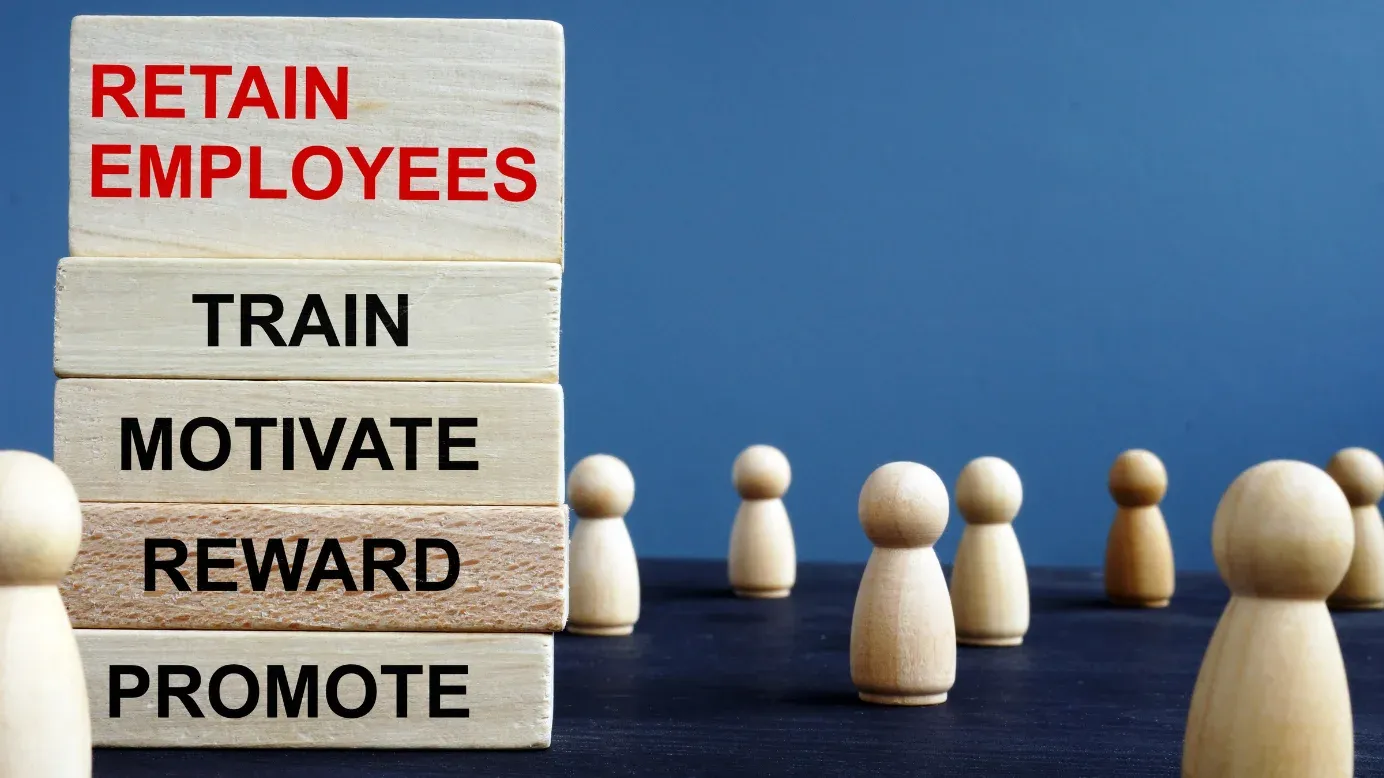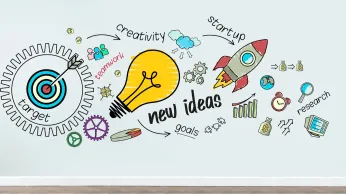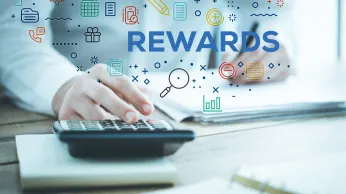Tools zur Mitarbeitermotivation: Wie Sie Ihr Team inspirieren und mit Energie versorgen
Tools zur Mitarbeitermotivation können Ihr Team inspirieren und motivieren. Entdecken Sie technologiegestützte Strategien, die die Arbeitsmoral steigern und den Erfolg fördern.
Auf dieser Seite
Over 70% of workers are signaling a powerful message: they want their employers to do more to ignite their passion and motivation. It's not just about the paycheck anymore—employees are yearning for purpose, recognition, and growth. The key to unlocking this potential? Cutting-edge employee motivation tools that can transform your workplace into a hub of inspiration, energy, and unstoppable performance.
In today's fast-paced work environment, keeping employees motivated is more critical than ever. Motivated employees are not only more productive but also more engaged, leading to better outcomes for the organization. However, motivating a diverse workforce requires more than just traditional incentives. With the advent of technology, new tools have emerged that can inspire and energize your team like never before.
Understanding employee motivation
Employee motivation is the driving force behind an employee’s performance, creativity, and overall contribution to an organization. It’s not just about the paycheck; it’s about feeling valued, having a sense of purpose, and being part of something bigger. When employees are motivated, they are more likely to go the extra mile, resulting in higher productivity and a positive workplace culture.
Die Technologie hat jeden Aspekt des Arbeitsplatzes verändert, auch die Art und Weise, wie wir unsere Mitarbeiter motivieren. Heute können Unternehmen innovative Tools nutzen, um die Motivation ihrer Mitarbeiter zu bewerten, zu überwachen und zu verbessern und so ein dynamischeres und reaktionsfähigeres Arbeitsumfeld zu schaffen. Diese Tools ermöglichen personalisierte Motivationsstrategien, die auf die individuellen Bedürfnisse eingehen können und die Motivation effektiver und nachhaltiger machen.
Understanding employee motivation tools
Tools zur Mitarbeitermotivation sind Ressourcen oder Plattformen, die Managern und Personalverantwortlichen helfen, die Arbeitsmoral und das Engagement der Mitarbeiter zu steigern. Diese Tools sind unverzichtbar, da sie verwertbare Erkenntnisse darüber liefern, was die einzelnen Mitarbeiter antreibt, so dass die Unternehmen ihre Motivationsstrategien entsprechend anpassen können. Ohne die richtigen Tools können die Bemühungen zur Mitarbeitermotivation ins Leere laufen, was zu Desengagement und Fluktuation führt.
Examples of employee motivation tools range from simple feedback platforms to sophisticated engagement software. They include everything from pulse surveys and recognition platforms to gamification systems and performance tracking software. Each tool serves a unique purpose, and when used correctly, they can significantly enhance an organization’s motivation efforts.
1. Instrumente zur Bewertung der Motivation
Instrumente zur Motivationsbeurteilung dienen dazu, das aktuelle Niveau der Mitarbeitermotivation in einem Unternehmen zu ermitteln. Sie liefern eine Momentaufnahme dessen, was die Mitarbeiter antreibt und welche Hindernisse sie möglicherweise daran hindern, ihr volles Potenzial auszuschöpfen. Zu den Vorteilen dieser Instrumente gehören gezielte Interventionsstrategien, verbesserte Mitarbeiterzufriedenheit und die Möglichkeit, die Motivation über einen längeren Zeitraum zu verfolgen.
2. Plattformen für Engagement
Engagement-Plattformen sind umfassende Tools, die Unternehmen dabei helfen, ihre Mitarbeiter zu binden und zu motivieren. Zu den wichtigsten Funktionen, auf die Sie achten sollten, gehören Echtzeit-Feedback, Anerkennungsfunktionen und die Integration mit anderen HR-Systemen. Diese Plattformen sollten auch Analysen anbieten, um die Auswirkungen von Engagement-Initiativen zu messen.
Quest Diagnostics Implemented an enhanced engagement program including engagement platforms that led to over 1,000 employees enrolling, marking their highest rate of engagement in the past five years.
KPMG utilized various engagement strategies including employee feedback tools, engagement platforms etc., which contributed to a 26% increase in retention rates over four years.
3. Gamification-Tools
Gamification-Tools wenden spielähnliche Elemente wie Punkte, Abzeichen und Bestenlisten auf Umgebungen an, die keine Spiele sind, wie etwa den Arbeitsplatz. Diese Tools nutzen den Wettbewerbscharakter des Einzelnen, machen alltägliche Aufgaben spannender und steigern so die Motivation. Zu den Vorteilen gehören eine höhere Beteiligung, eine bessere Leistung und eine lebendigere Unternehmenskultur.
Deloitte incorporated gamification into its Deloitte Leadership Academy to enhance its leadership training programs. As a result, they saw a 37% increase in the number of weekly returning users, indicating a significant boost in employee engagement.
SAP uses gamification to enhance employee engagement and retention by incorporating immersive game-based learning into its training programs.
For example, SAP developed various game worlds like escape rooms and challenges that significantly increased engagement. It has been estimated that using gamification in training can improve retention rates to 75%, compared to just 5% with traditional learning methods.
Implementing technology-driven motivation tools
Ways to implement technology-driven motivation tools:
Step 1: Assess needs
Before implementing any motivation tools, it’s crucial to assess the specific needs of your organization. Identify key areas where motivation is lacking and determine which tools will best address those challenges.
- Identify key areas: Use surveys or interviews to understand where employees feel disengaged.
- Select appropriate tools: Based on the identified needs, choose tools that align with your goals.
Step 2: Integration
Once the appropriate tools have been selected, the next step is to integrate them into your existing systems. This ensures that the tools work seamlessly with other HR processes and that data flows smoothly across platforms.
- Incorporate tools: Work with IT and HR teams to embed the tools into daily workflows.
- Ensure compatibility: Check that the tools are compatible with other software used in the organization.
Step 3: Communicate and train
Effective communication and training are key to the successful adoption of motivation tools. Employees need to understand how these tools will benefit them and be trained on how to use them effectively.
- Inform employees: Clearly explain the purpose of the tools and how they will enhance their work experience.
- Provide training: Offer training sessions to ensure everyone is comfortable using the new tools.
Step 4: Monitor and evaluate
Finally, it’s important to continuously monitor the use of these tools and evaluate their impact. Regular feedback from employees can help you make necessary adjustments and ensure the tools are achieving their intended outcomes.
- Track usage and feedback: Use analytics to monitor how often the tools are used and gather feedback from employees.
- Measure impact: Assess whether the tools are leading to increased motivation and improved performance.
Best Practices for using employee motivation tools
The best practices for using employee motivation tools:
1. Ensure personalization
Motivation is personal, and the tools used should allow for customization to meet individual needs. This ensures that each employee feels valued and motivated in a way that resonates with them.
2. Customization
Choose tools that allow for personalized motivation strategies, such as tailored rewards or recognition.
3. Foster a positive culture
A positive workplace culture is the foundation of motivation. Encourage participation and celebrate successes to create an environment where motivation tools can thrive.
4. Encourage participation
Create opportunities for employees to engage with the tools and with each other.
5. Provide ongoing support
Motivation is not a one-time effort. Continuous support and improvement are necessary to keep employees motivated over the long term.
6. Kontinuierliche Verbesserung
Regularly update and refine your motivation strategies to keep them effective and relevant.
Fallstudie
Die Herausforderung
A commercial services company has experienced significant growth, expanding from a small team of 17 employees in 2009 to nearly 250 employees today. The company operates across multiple offices and provides a range of marketing and other professional services to both local and multinational clients. Its rapid expansion highlights its successful adaptation and growing influence within the industry.
The executive manager of this company sought to leverage technology to boost employee engagement, align employees with the company’s core values, and enhance retention through a robust rewards and recognition program.
Key challenges included attracting and retaining the right talent, eliminating bias in the recognition program, and fostering a people-first culture while driving engagement.
Die Lösung
To address these challenges, the company implemented Empuls, a holistic platform that streamlined communication, rewards, and recognition. Empuls became the central hub for employee engagement, allowing employees to connect, align, and share feedback.
Empuls provided a social intranet that reinforced values of diversity and inclusion, serving as an open forum where employees shared views, updates, and success stories. This shift from email communication to inter-team networking created an inclusive atmosphere and strengthened employee alignment with the company's core values.
Additionally, Empuls enabled the company to capture the employee voice through engagement surveys. The surveys provided valuable insights into the link between recognition, engagement, and retention, achieving a 70% completion rate within the first week.
Empuls also transformed the company’s recognition and rewards program. By decentralizing the recognition process, empowering peer-to-peer recognition, and offering customizable workflows, Empuls significantly increased recognition moments—from just three awards per quarter to 300 appreciations in six months.
The ROI of investing in employee engagement
Empuls delivered impressive results, with 90% active adoption among employees, a 70% survey completion rate, and over 300 recognition moments within six months. The reaction rate for internal posts reached over 91%, reflecting high engagement. The company continues to see a positive impact on retention, morale, motivation, and overall job efficiency.
Empuls has proven to be a powerful tool in building a culture of recognition and engagement, and the company is committed to continuing this momentum.
Schlussfolgerung
Incorporating technology-driven employee motivation tools into your organization can transform the way you inspire and engage your team. By understanding your team’s needs, selecting the right tools, and implementing them thoughtfully, you can create a motivated and energized workforce that drives your organization’s success.
Ready to take the next step? Get in touch with the culture experts to learn how you can start leveraging these tools today.
FAQs
Wie kann man Mitarbeiter motivieren?
Motivating employees involves more than just financial incentives. To effectively motivate your team, focus on understanding their individual needs and drivers. Implement strategies that include recognition programs, opportunities for professional growth, and creating a positive workplace culture. Utilizing technology-driven tools like feedback platforms, engagement software, and gamification can also help boost motivation by providing personalized and real-time support.
What are employee motivation tools?
Employee motivation tools are platforms or resources designed to enhance employee engagement, satisfaction, and overall motivation. These tools can include anything from pulse surveys that assess motivation levels to recognition platforms that celebrate achievements. By using these tools, organizations can better understand what drives their employees and tailor their motivation strategies accordingly.
What are frequently used motivation tools for employees?
Commonly used motivation tools include:
Engagement Platforms: Tools like Empuls and Slack enhance communication and foster a connected workplace.
Recognition Software: Platforms like TINYpulse allow for real-time feedback and peer-to-peer recognition.
Gamification Tools: Systems like Kahoot! and Badgeville introduce competitive elements to tasks, making work more engaging and rewarding.
What motivates employees?
Employees are motivated by a combination of intrinsic and extrinsic factors. Intrinsic motivation includes the desire for personal growth, a sense of purpose, and being part of a positive culture. Extrinsic motivation involves recognition, rewards, and financial incentives. Understanding these factors allows organizations to create a more motivating work environment tailored to their employees' needs.
How to increase/improve motivation?
To increase or improve motivation, start by assessing your employees' current motivation levels using tools like surveys or feedback platforms. Once you understand the key areas needing improvement, implement targeted strategies such as personalized recognition programs, opportunities for career advancement, and fostering a positive work culture. Continuous monitoring and adaptation of these strategies are crucial for sustained motivation.
How to use motivation tools to motivate employees?
To effectively use motivation tools:
Assess needs: Identify areas where motivation is lacking and select appropriate tools.
Integrate tools: Ensure that the tools are seamlessly integrated into daily workflows.
Communicate and train: Educate employees on the benefits of the tools and provide training.
Monitor and evaluate: Continuously track the use of tools and their impact on motivation, making adjustments as necessary to maintain effectiveness.













